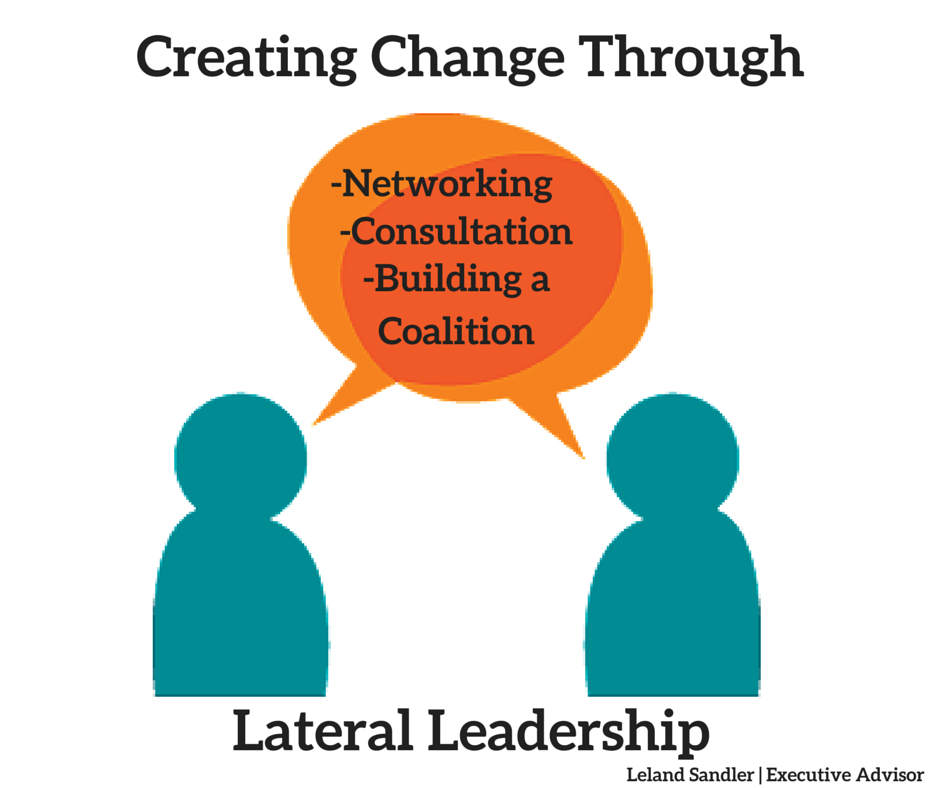by Leland Sandler | Nov 5, 2015 | Executive Advisor, Leland Sandler, The Sandler Group
As an executive advisor, I am always searching for new and innovative ways to help professionals excel in the business world by enhancing their communication and leadership skills. At the Sandler Group, we use a number of tools to help our clients master these skills and effectively interact with other professionals. One of our most valuable tools is called the Ladder of Inference.
The Ladder of Inference is a tool that demonstrates to an individual how inefficient their thinking is. When an individual takes in information, they often unknowingly observe an incomplete reality based on their preexisting assumptions and past experiences. They filter the information without thought or consideration and draw conclusions based on their interpreted facts and assumptions. In this way individuals often develop beliefs based on these assumptions and take action that may seem right, but could be disastrous.
So what happens? In today’s business world, these self-generated beliefs remain largely untested. This often leads to a loss in ability to achieve great results. A  business’ chance of succeeding drastically weakens when a group or individual has the mindset that:
business’ chance of succeeding drastically weakens when a group or individual has the mindset that:
-Their beliefs are the truth
-The truth is obvious
-Their beliefs are based on real data
-The data they select is always the real data
The Ladder of Inference is a tool that works to prevent this way of thinking by getting individuals to “catch themselves” before they go too far down their road of personal assumptions.
There are two types of skills that play a key role in helping individuals overcome these inaccurate assumptions: reflective thinking and inquiry. Reflective thinking involves slowing down the thinking process in order to become more aware of how we are reaching our conclusions and assumptions, and then sharing that thinking. Inquiry involves engaging in conversations where we can openly share views, share assumptions, and ask for more information about one another’s point of view. The goal is really understand what a person is saying and how their thinking makes sense to them.
Working with the Ladder of Inference will help professionals become better team members, communicators, and leaders. It will help businesses implement strategies that are the most effective for everyone involved. By using the ladder of inference we engage our reality most efficiently; we avoid conflict; we avoid misunderstanding, and we get great results.
by Leland Sandler | Oct 7, 2015 | Executive Advisor, Hiring, Leland Sandler
 When put simply, there are two ways to go about handling any given situation. You can choose to take action and have a say in the outcome or, you can choose to sit back and wait for the results to unfold themselves. In this way, you can either choose to be part of the cause (at cause) or part of the effect (at effect).
When put simply, there are two ways to go about handling any given situation. You can choose to take action and have a say in the outcome or, you can choose to sit back and wait for the results to unfold themselves. In this way, you can either choose to be part of the cause (at cause) or part of the effect (at effect).
In order to make a prominent stand in the business world, one must always look to be at cause. Managers and business leaders must ask questions like, “What are we going to make happen today? What do we want to create? And how are we going to do it?” They must focus on what they are going to make happen rather than what may happen to them. This demonstrates great character and leadership that other employees will look up to and follow.
Being at cause is not only important for upper level managers and executives, it is also crucial for those in the early stages of establishing a career going on interviews. Consider a situation where two people are interviewing for a job. Both individuals have the necessary credentials and are well qualified for the role. One individual takes on the interview with the point of view that the result will reflect entirely on their own performance. Whether or not they get the job depends on how they choose to present and project themselves. This individual takes full responsibility for the interview’s outcome, feeling very confident and in control.
The second individual, however, approaches the interview much differently. In their mindset, they know they will do the best they can, but the decision is ultimately based on the interviewer’s thoughts and opinions of them as well as how well the other candidates performed. This individual does not believe they have control over their own interview, making them feel less confident and less likely to succeed.
In my experience as an executive advisor, leaders at cause have a much greater chance of building a long and successful career in a field of his or her choice. Individuals that are able to take control of any given situation make a great fit for leadership positions such as managers, senior executives, and even CEOs.
by Leland Sandler | Sep 4, 2015 | Executive Advisor, Hiring, Leland Sandler
The hiring process is no easy task. When hiring new employees, CEOs are faced with many challenging decisions that will have a major impact on the success and future of their company. It is important for a CEO to understand that hiring is both a science and an art. There are logical processes a CEO needs to go through in selecting a key hire including reviewing resumes, references, CVs, etc., but there is also an art to it. The art involves being as objective as possible throughout the entire process.

In my experience as an executive advisor, I have seen many clients fall into the same trap of looking for someone who is too much like themselves. They look for someone they are compatible with and can enjoy being around. While this may be a good quality, the most important question a CEO must consider is whether or not the person can take on the role and execute at a level that the company needs.
Choosing the wrong hire can have detrimental effects on a company, bringing down employee morale, decreasing productivity, damaging client relations, and more. This is why an executive advisor can be so helpful when it comes to the hiring process. An executive advisor offers a fresh perspective and outside point of view to help CEOs make well thought out, objective decisions on who to bring into their company.
Listed below are several qualities to look out for when looking for the best new hires for your company:
Energy:
One of the greatest qualities to look for in a new employee is energy. The individual should demonstrate that they have what it takes to give 100% every day. At the same time, their high energy levels will reflect positively on other employees and motivate them to do the same.
Passion:
A second essential quality for a good employee is passion. The individual should be passionate about what the company is all about. If the person is not genuinely excited about the product or their particular role in the company, there is a good chance they will not be willing to give everything they have towards completing company goals.
Meets Specific Job Requirements:
The most important and seemingly obvious quality that all good employees should possess is the ability to meet the specific requirements of their job title. Sometimes a CEO may overlook this and focus more on how they engage and interact with the individual. While this is a important consideration, one must think about what type of individual will be able to get things done for the company. A person may be likable, but if they cannot bring in results and tangible value, they are really only slowing the company down.
Cultural Fit
Identifying the qualities that will lead to quality interaction and fit in with the company’s culture and with other employees is the final piece. Uncovering the way a candidate will live up to the real operating principles of the company cannot be undervlued. This “fit” between candidate and principles is a determining factor of long term success for the candidate and the organization.
by Leland Sandler | Aug 17, 2015 | Executive Advisor, Leland Sandler, Networking, The Sandler Group

Executive Advisor Leland Sandler speaking at an HR Conference in Amsterdam
As an executive advisor, I strive to help professionals expand their presence, knowledge, and leadership skills in today’s complex and ever growing business world. One of the most significant and effective ways to progress your career is through the practice of networking.
Some business professionals believe that the best way to succeed is to focus entirely on oneself and one’s own work. They believe it is better to concern themselves with their own responsibilities and aspirations than to look around at what everyone else is doing. However, while growing as an individual is certainly significant, engaging and communicating with other professionals in your field is equally important; in fact it is essential.
Job networking plays a key role in the success of your career and of your business. The larger your business network, the larger potential you have to gain customers, job opportunities, recognition, and resources. Listed below are several essential networking techniques for any professional looking to increase their influence and success while creating real, powerful change in their industry.
1. Social Media
In today’s internet based society, many people are engaging more online than they are in person. Social media has provided us with numerous unique platforms that allow us to engage and interact with people who share our interests from all around the world. Through sites like Linkedin, Twitter, Crunchbase, About.me, and more, we are able to make connections with people we might otherwise never come into contact with. For this reason, building professional profiles and participating in conversations online are essential aspects of successful networking.
2. Conferences and Seminars
While social media has come to play a major role in today’s professional networking strategies, classic, face to face interactions are still very relevant and important. Attending conferences and seminars provides a great opportunity to make real, in person connections with leaders in your industry. Many conferences will provide published lists of all attendees of the event. To get a head start in the networking process, make a list of specific individuals you would like to meet that may help you gain valuable insight and move forward in your career endeavors.
3. Networking is a Two-Way Street
It is important to remember that networking is not meant to be used only for your own benefit. Instead, networking should be viewed as a two-way street. Networking isn’t all about figuring out how you can best gain from connecting with another individual. Networking is about building mutually valuable relationships. It is best if your goal in connecting with another is to see what value you can provide to them. If one side is gaining everything and giving nothing in return, the relationship is sure to fail or be very short lived.
by Leland Sandler | Aug 6, 2015 | Executive Advisor, Leland Sandler, The Sandler Group
 In my previous blog, I discussed several basic strategies for effectively demonstrating lateral leadership. Lateral leadership is a form of leadership where no particular title or position is required. It encourages coordination and cooperation between different groups and departments all working to achieve a common goal. You do not need to be a high level CEO or manager to be a leader. Leadership is not about waiting to be called upon to give instruction. Rather, it is about identifying the opportunities to step in and demonstrate leadership in a way that will create initiative and positive influence within the group.
In my previous blog, I discussed several basic strategies for effectively demonstrating lateral leadership. Lateral leadership is a form of leadership where no particular title or position is required. It encourages coordination and cooperation between different groups and departments all working to achieve a common goal. You do not need to be a high level CEO or manager to be a leader. Leadership is not about waiting to be called upon to give instruction. Rather, it is about identifying the opportunities to step in and demonstrate leadership in a way that will create initiative and positive influence within the group.
Honing the skills to become an effective leader takes time and patience. However, the payoff is certainly worth it. By mastering the following strategies for lateral leadership, you will soon find doors to success swinging open with endless opportunities to create valuable change for your organization.
Networking
Establishing a broad network of relationships with people both inside and outside your company and field of expertise is an essential part of becoming a lateral leader. Through networking, you will find people who are willing to offer you support and people who can provide you with connections to even bigger networks, expanding your overall capacity for success.
Consultation
Take the time to meet with your team and the people you are working with. Ask about their ideas and opinions on how to achieve the task at hand while sharing your own thoughts and ideas as well. Reacting to one another’s ideas and bouncing different ideas of each other will help you learn how the goals of the group will be completed most effectively for everyone involved. There is always more than one way to go about completing a task. Some managers will stick strictly to their own strategies that have worked in the past. However, every individual is unique and works in a different way. Instead of forcing your way on others, try engaging in more productive consultation.
Building a Coalition
Simply put, there is strength in numbers. Gathering a group of influential people together around a common goal will create a higher sense of authority and lead to higher levels of support. Building a coalition of supporters and individuals who believe in the same goal plays a vital role in lateral leadership. Instead of standing alone, find others who are going to be affected by the change you are proposing and get them on the same page. Once everybody understands and supports the big picture, each individual will take on their necessary role to lead the organization into the great and inevitable change that is sure to follow.
 business’ chance of succeeding drastically weakens when a group or individual has the mindset that:
business’ chance of succeeding drastically weakens when a group or individual has the mindset that:




Follow Me